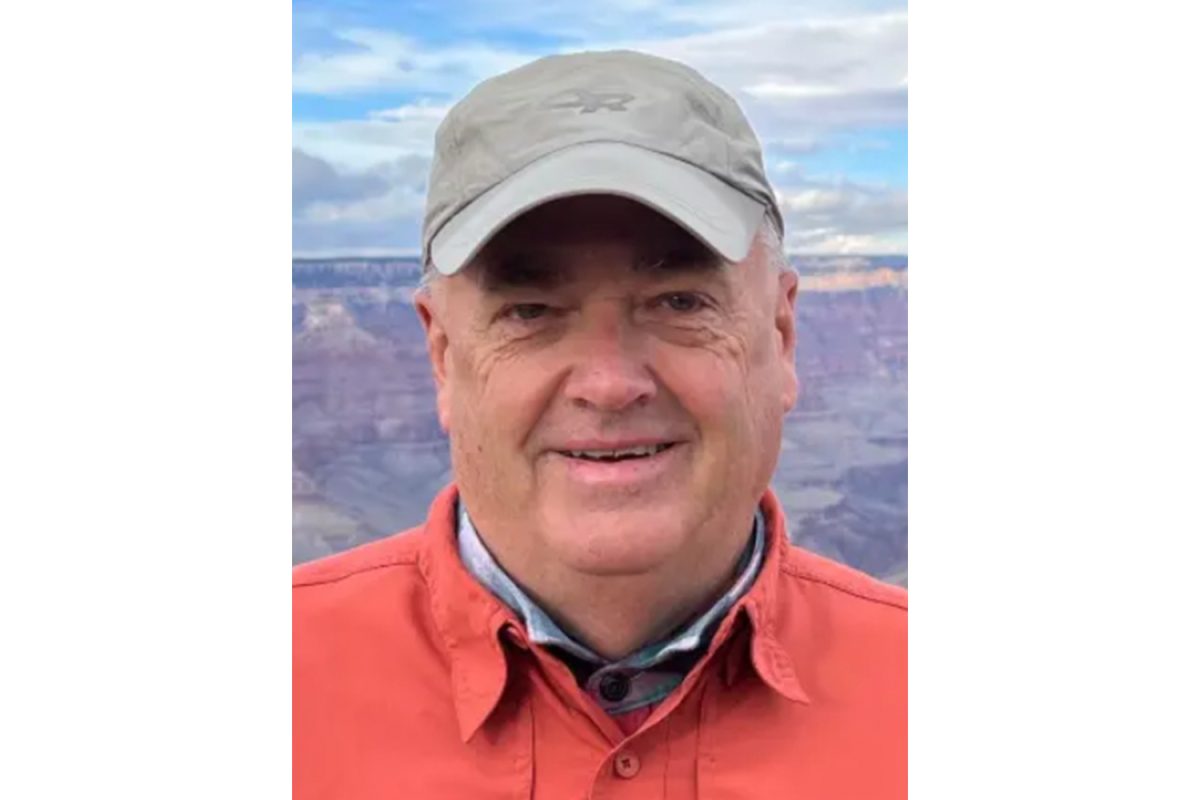Larry Gullett, the longtime Johnson County Conservation director who played a pivotal role in returning seven acres of ancestral land to the Iowa Tribe of Kansas and Nebraska, died last month, leaving behind a legacy of environmental stewardship and cultural restoration.
A lifelong Iowan, Gullett dedicated over 40 years to conservation efforts across the state, holding various positions with conservation boards in Johnson, Jones, Jasper, and Dallas counties.
In 2022, during Gullett’s tenure as Johnson County Conservation director, the Johnson County Conservation Board acquired 83 acres in north central Johnson County — known as the Two Horse Farm — through a donation and purchase agreement with the Iowa Natural Heritage Foundation and former owners Erin and Brian Melloy.
Ross Baxter, senior land protection director and counsel for the Iowa Natural Heritage Foundation, said the Melloys and Gullett shared a commitment to the Land Back movement, which supports the return of land to its original Indigenous stewards.
Together they discussed an idea to transfer seven acres of the Two Horse Farm back to the Iowa Tribe of Kansas and Nebraska, honoring the Tribe whose name the state of Iowa bears.
Baxter explained that the Melloys agreed to a bargain sale of the property, meaning a sale below the appraised value.
“That allowed the county to purchase 83 acres of the 90 acres at a fair market value price and then gave us the opportunity to gift that seven acres to the Tribe,” Baxter said.
Lance Foster, tribal historic preservation officer and member of the Iowa Tribe of Kansas and Nebraska, described the seven-acre parcel at Two Horse Farm as a powerful return to his tribe’s ancestral homeland.
“It’s really the first spot in Iowa that we own,” Foster said. “And we are an original Tribe of Iowa. That’s how Iowa got its name.”
According to a study published in Science, a research journal, in Oct. 2021, Indigenous people within the boundaries of the current-day U.S. have lost nearly 99 percent of the land they historically occupied.
This data set — the first to measure land loss and forced displacement in the U.S. — also found that 42.1 percent of tribes present in historical records have no recognized tribal land base today, either federally or state-recognized.
For those that still retain a land base, their current lands average 2.6 percent of their estimated historical area.
The Land Back movement, which gained traction on social media in the early 2010s, is an Indigenous-led effort advocating for the return of ancestral lands to Native American Tribes to restore sovereignty, cultural rights, and environmental stewardship.
Spearheaded in part by NDN Collective, the movement calls for the reclamation of Indigenous jurisdiction over land, as well as the restoration of languages, ceremonies, and governance.
RELATED: Reptile meet-and-greet promotes conservation in Johnson County
The decentralized movement has seen major successes, including the return of nearly three million acres across 15 states to tribal nations through a decade-long U.S. Department of the Interior program.
In addition to these large-scale efforts, smaller victories continue. In July, the Winnebago Tribe of Nebraska reclaimed thousands of acres of conservation land through the Winnebago Land Transfer Act, part of ongoing efforts to restore Indigenous land ownership nationwide.
The Ioway originally inhabited villages along major rivers. In the 1830s, after losing territorial disputes with the Sioux and Sac and Fox tribes — who were favored by the U.S. government — the Ioway were forcibly removed to reservations in Kansas, Oklahoma, and Nebraska, with Chief Big Neck fighting to his death to resist the removal.
Today, two groups of Ioway remain: the Iowa Tribe of Kansas and Nebraska, and the Iowa Tribe of Oklahoma.
Bradley Freidhof, the acting director of Johnson County Conservation since Gullett’s passing, said he worked with Gullett for years and described Gullett as a purist in his work toward ecological restoration.
“His view was, all the work you do to restore the land, you also have to bring the voices of the people who gave that land back,” Freidhof said. “It was always his view that if there was some connection to Native Americans, that he wanted to engage them in that restoration.”
Freidhof described the moment when the Johnson County Conservation Board officially returned the land to the Iowa Tribe, emphasizing the significance of the event.
“It was a very emotional event because they were welcomed home,” Freidhof said. “This is their homeland. Now, it’ll never be back to the way it was, but it is a step in the right direction.”
Foster explained that because the tribe’s use of the seven-acre parcel will be infrequent and their headquarters are located in Kansas, they established an agreement with the Johnson County Conservation Board to manage the land on a day-to-day basis, with guidance and input from the tribe.
Foster noted that while the tribe will not regularly use the land, the symbolic gesture is a significant step in acknowledging and addressing historical injustices, serving as a powerful act of reconciliation and respect for the tribe’s ancestral connection to the area.
“Larry has always been a good friend to Native folks, he’s always had a good heart, and he’s always tried to do right by everybody,” Foster said. “He’ll always be remembered in a good way among our people, that’s for sure.”
Freidhof said he intends to carry forward Gullett’s approach to ecological restoration and collaboration with Indigenous communities in his role as acting conservation director but emphasized that the board first needs time to properly mourn Gullett’s passing.
“There’s some small things that we’re considering right now as a conservation board, but I think there will be something big on our horizon,” Freidhof said. “I’m looking forward to working through that with the board.”



